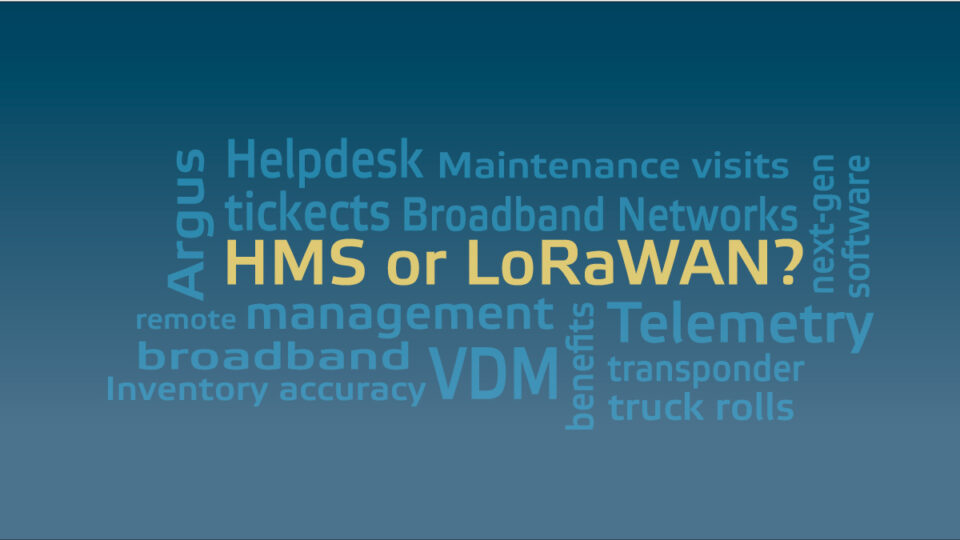
Full Duplex DOCSIS®, European perspective, Part 1
Studies covering possibilities of the FDX DOCSIS technology are available but focus on network architectures and needs of North American cable operators [1, 2]. While networks and needs of European cable operators are in many ways similar to their American peers, some important differences exist. We have used the past six months to research what technical challenges are focal and whether the FDX DOCSIS technology makes commercial sense in Europe. Although our research continues, we can already now stimulate curious minds and discuss pivotal challenges from a European perspective.
Very few subscribers demand symmetrical services, unless we incorporate business broadband services. In fact, studies indicate that compound annual growth rate (CAGR) of downstream data rates has constantly exceeded CAGR of upstream data rates [2, 3]. However, forecasted discontinuity in the upstream bandwidth needs and steps towards more symmetrical services are often reasoned through new cloud-based applications requiring a video upload capability [2, 4]. A pragmatic interpretation based on existing information would be that required downstream speeds are growing faster than required upstream speeds, especially due to strongly asymmetrical OTT services. Sometimes symmetry might be mistaken to mean low latency. Although latency requirements become tight due to virtual reality, gaming, and services alike, these services can still be asymmetrical.
Pressure to build symmetrical cable television networks and offer Full Duplex DOCSIS is often caused by FTTH marketing initiatives which highlight importance of symmetry. Instead of discussing what kind of cable types are important [5], the discussion should focus on available services that benefit individuals and society apace. In industry events, I have often heard that whereas FDX DOCSIS might be less important in Europe, the situation is different in the North America as their strand mounting outdoor approach ease implementation of FDX DOCSIS. Does the argument have merit, easiness of implementation doesn’t mean that symmetry is needed. Are services in North America somehow different? Not really, even in North America the upstream bandwidth is mainly consumed by peer-to-peer file sharing and by OTT applications requiring TCP acknowledgment messages [3]. However, business case in North America may pay dividends if infrastructure investments are lower than in Europe.
While the need to move towards more symmetrical services is still a big question mark, it is obvious that both upstream and downstream bandwidth growth continues. New DOCSIS generations have improved bits/Hz ratio, but it alone won’t solve CAGR challenges of up and downstream. Accordingly, European cable operators have made massive network upgrades, and networks are ready for high split (204 MHz return path) and 1.2 GHz (forward path) use. Although networks are ready, very few operators are using their full potential; even FM radio frequencies (usually 87.5 MHz … 108 MHz) are not yet used to reach higher upstream data capacity, except by two operators that the author is currently aware of. Perhaps the higher upstream capacity is simply not needed or FM radio is seen to be an important service; it might be both. Although use of the full duplex technology together with traditional FM radio is in theory a possibility, a more straightforward alternative to increase upstream bandwidth would be the shutdown of FM radio totally. Already this act would triple the available upstream bandwidth. But what happens once tripling is not enough; would the next step be the full duplex technology? Most likely not in Europe, unless dramatic upstream capacity requirements appear suddenly and FTTH operators gain superior competitiveness due to services needing such capacity. More likely, capacity increase due to use of 204 MHz return path and due to shift to distributed access will be enough for years to come. A logical step after this shift would be a leap towards ultra-high split networks (400 MHz or even 500 MHz) along with extended 1.8 GHz downstream.
Nonetheless, we cannot ignore possibilities of full duplex technology, not in North America or in Europe. Our research continues, as networks have continental and even national characteristic, they have different signal levels, distances and passive infrastructure. To help our customers rolling out FDX DOCSIS successfully, we must model and understand limits of networks, study how interference groups are formed in various scenarios, and offer useful tools for operators who have chosen the FDX path.
Wish to continue with the topic? Part 2 is available here.
[1] Chapman J.T., Liu T., Jin H. (2017). IG Discovery for FDX DOCSIS. Cisco. Retrieved from https://www.cisco.com/c/dam/en/us/solutions/collateral/service-provider/cable-access-solutions/white-paper-c11-739768.pdf (accessed December 2018)
[2] Al-Banna A., Cloonan T., Howe J. (2017). Network migration strategies for the era of DAA, DOCSIS®3.1, and new kid on the block…full duplex DOCSIS. Arris. Retrieved from https://www.arris.com/globalassets/resources/white-papers/network-migration-strategies.pdf (accessed December 2018)
[3] Miguelez P. (2018). What Applications are Driving Higher Capacity in Access? Comcast. Retrieved from https://ieeexplore.ieee.org/document/8385710 (accessed December 2018)
[4] Cisco. (2018). Cisco Global Cloud Index: Forecast and Methodology, 2016–2021. Retrieved from https://www.cisco.com/c/en/us/solutions/collateral/service-provider/global-cloud-index-gci/white-paper-c11-738085.html (accessed December 2018)
[5] FTTH Council Europe. (2018). The FTTH Council Europe warns against misleading fibre advertising Retrieved from https://www.ftthcouncil.eu/documents/PressReleases/2018/FTTH%20CE%20Open%20Letter%20Fibre%20advertising%2004-12-2018-FINAL_Update.pdf (accessed December 2018)
Arttu Purmonen
Arttu Purmonen
I joined Teleste in 1997 and engineered video processing and data transmission products. I have worked as engineer, project manager, product manager and business director but understanding customer perspective has always motivated me. It brought me to be responsible for system and technical marketing where my internal driving force and former experience can party together. See my LinkedIn.



